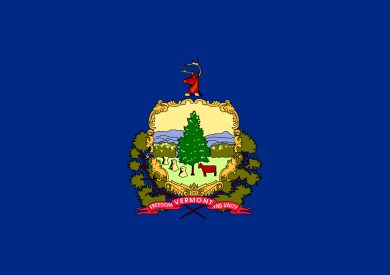
 Popular Cities For Lending in Vermont
Popular Cities For Lending in Vermont
Middlebury
Montpelier
Newport
Rutland
Shelburne
South Burlington
Springfield
St. Albans
St. Johnsbury
Winooski
In the Vermont real estate market, grabbing properties before your competition is essential for making the best deals. Although real estate investors sometimes go the traditional route and seek bank loans, the process is anything but speedy.
When time is of the essence, waiting for the lengthy process of getting approval is not an option for most investors. Vermont hard money lenders specialize in providing hard money loans which provide quick funds to investors. These loans are for a non owner occupied property or in some cases for business purpose loans.
Vermont Hard Money Lender FAQ’S
Below are some of the most frequently asked questions we get regarding hard money loans and lenders in Vermont.
What Do Vermont Hard Money Lenders Specialize in?
Vermont hard money lenders specialize in providing short-term, creative financing for real estate investors. If you seek a conventional lender to purchase an investment property, your loan request will be based on the property’s value and your assets. Your credit score, job, and finances will be scrutinized intensely. Hard money lenders base their final loan decisions on the after-repair value. The ARV represents the potential value of a property after all repairs have been accomplished.
What are the Benefits of Vermont Hard Money Loans?
Vermont hard money loans offer advantages that traditional banks cannot. Lenders like Acamnet Financial offer a higher level of flexibility than banks. When qualifying for this type of loan, lenders do not delve too deeply into the finances of real estate investors. In most cases, simply present the property and your plans, which saves you the hassle of gathering countless financial documents.
Do Vermont Hard Money Lenders Look at my Credit Score?
One of the greatest benefits of working with Vermont hard money lenders is the lack of credit score requirements. One of the first things a bank does is check your credit score. You can get approved for a hard money loan in Vermont even if you have bad credit or poor credit, bankruptcies, and foreclosures in the past. Vermont Hard money lenders primarily care about the property you are purchasing.
What is the Interest Rate & Points for Hard Money Loans in Vermont?
Interest rates for hard money loans in Vermont are typically higher than traditional bank loans (conventional loans) because of the greater risk lenders must take on when approving loans. When searching for a hard money lender near me in Vermont, you will find average interest rate is between 8%-15%. You should also be aware that lenders sometimes charge points that are meant to offset their administrative costs. Each point represents 1% of the total loan amount. The average points lenders charge is between 1 to 3. Some lenders may charge up to 10 points. These points are due upfront or at closing, depending on the lender.
What Should I Look for in a Vermont Hard Money Lender?
There are many benefits to working with a Vermont hard money lender. You just need to make sure you are working with the right lender. You can rely on Acamnet Financial Group when you need us most. We offer reliability, consistency, experience, and support. As a real estate investor, you know the importance of grabbing the best property deals when they become available.
How can Hard Money Lenders in Vermont Help Me?
Whether you are new to real estate and real estate projects or an old pro, you know having the capital to purchase real estate is essential. Without funds, you will miss out on real estate transactions. When you partner with hard money lenders in Vermont, you will quickly get the money you need without jumping through the hoops of traditional bank lenders.
How do I get a Hard Money Loan in Vermont?
When you want a hard money loan in Vermont, begin by preparing the property information. Location, size, purchase price, after repair value, repair costs, etc. In most cases, the financing will be based on these numbers. Then, apply for a hard money loan in Vermont using this information and supply some financial information. Then, an appraisal will be ordered to assess the loan-to-value ratio, which will influence the loan amount.
How do I Refinance a Vermont Hard Money Loan?
Refinance a Vermont hard money loan will involve moving from a high interest, short term loan to a longer term, usually lower interest rate loan. Typically a conventional type of loan. When refinancing a Vermont hard money loan you will find it will have a more stringent set of guidelines. You will need to have sufficient credit and income qualifications. As the lending landscaping and regulations constantly change, you want to consult a knowledgeable conventional loan expert.

Current Real Estate Trends In Vermont (2024)
This article provides an analytical and data-driven overview of the current real estate trends in Vermont.
Analyzing the market will involve examining factors such as supply and demand, pricing trends, and market competitiveness.
Buyers may enjoy advantages such as favorable interest rates, inventory levels, and potential for negotiation.
Potential risks associated with the Vermont real estate market, including economic factors, regulatory changes, and market volatility, will also be objectively highlighted.
The article is written in an impersonal and objective manner to provide readers with a comprehensive understanding of the current real estate trends in Vermont and enable them to make informed decisions in the market.
Market Overview
The Vermont real estate market is characterized by an even supply and demand, with moderate cost increases and a stable number of sales.
Data shows that the median house price in Vermont has grown by 4% in the past 12 months and is now at $250,000.
The number of homes sold has not varied drastically, suggesting a healthy level of interest in the market.
Generally speaking, Vermont’s real estate sector appears to be secure and gradually rising.
Buyer’s Advantage
In Vermont, those looking to buy property are in a beneficial situation. The real estate market in the state is currently advantageous for buyers, with low-cost loans and a large selection of houses up for sale. Data from the Vermont Association of Realtors shows that the cost of homes in Vermont has remained steady over the last year, giving buyers the opportunity to locate suitable dwellings that don’t cost too much. In addition, the average amount of time homes in Vermont stay on the market is quite lengthy, providing purchasers with plenty of time to make educated decisions.
Advantage
| Explanation
|
Low-cost loans
| Purchasers can acquire mortgages at lower rates, decreasing their total cost of homeownership.
|
Large selection
| The abundance of residences for sale gives buyers a wide range of options and bargaining power.
|
Consistent median sales price
| The consistent median sales price suggests that buyers can discover reasonably priced homes without experiencing significant cost changes.
|
Long average days on market
| The longer dwellings stay on the market, the more time buyers have to carefully examine properties and make well-informed choices.
|
Potential Risks
Purchasing property in Vermont carries certain risks.
Unpredictable weather may cause property damage and expensive insurance premiums.
Living in a rural area could restrict access to amenities and services.
Property taxes tend to be high, and job availability could affect the resale value of properties.
It is important to consider these factors before investing in a property.
Sources
https://vtdigger.org/2023/02/16/a-vermont-perfect-storm-statewide-data-shows-record-spike-in-housing-prices/
https://www.houzeo.com/blog/vermont-real-estate-market/
https://www.vermontrealestatecompany.com/posts/when-will-housing-prices-drop-in-vermont-real-estate

All About Vermont
Vermont, the 14th state to join the Union in 1791, possesses a distinctive history, geography, and culture.
In the northeastern United States, Vermont is renowned for its picturesque Green Mountains, which hold historical significance predating the state’s name.
Before European colonization, Native Americans inhabited Vermont, although their population declined due to the introduction of European diseases. The pre-colonial era witnessed agriculture’s development and larger settlements’ emergence.
After the Treaty of Paris in 1763, Vermont became an attractive destination for settlement, having been part of New France.
The state’s geography is characterized by the presence of the Green Mountains and Lake Champlain, which divide various terrains.
Despite ranking last in the nation, Vermont’s economy is recognized for its progressivism and renewable energy generation.
With English as its primary language and adherence to the Eastern Time Zone, Vermont experiences distinct seasons, featuring warm summers and snowy winters influenced by the Green Mountains.
Overall, Vermont’s history, geography, and culture contribute to its distinctive identity.
History and Native Inhabitants
Vermont’s history is characterized by Native American inhabitants dating around 11,000 years ago. The Woodland period began approximately 3,000 years ago and marked a significant shift in the region as agriculture and larger settlements emerged.
However, the arrival of European explorers in the 1600s had devastating effects on the indigenous population. The introduction of European diseases led to a significant decline in the native population, altering the course of Vermont’s history.
This period of colonization and its impact on the indigenous people sets the stage for the subsequent section on the colonial period and European exploration.
Colonial Period and European Exploration
Explorers from Europe arrived in the 1600s, marking the end of the Woodland period and the beginning of the Abenaki tribe in the region now known as Vermont. European explorers, such as Samuel de Champlain, ventured into the area, which was then part of New France.
However, French colonization efforts in Vermont were limited, and it was in the Treaty of Paris in 1763 that the area became more attractive for settlement. The arrival of Europeans had a significant impact on the indigenous population, leading to the decline of the Abenaki tribe.
With the transition from the colonial period to the present day, it is essential to examine the geography and natural features of Vermont to understand its unique characteristics and how they have shaped the state’s history.
Geography and Natural Features
A region’s geography and natural features play a crucial role in shaping its history and defining its distinct characteristics.
Vermont, located in the northeastern part of the United States, is marked by the majestic Green Mountains. These mountains provide breathtaking scenery and influence Vermont’s climate, creating warm summers and snowy winters that support a diverse range of flora and fauna.
Lake Champlain, which separates the western valley terrain from the Connecticut River Valley, adds to the state’s natural beauty.
Most of Vermont’s terrain is forested, with agriculture occupying a significant portion of its open land. This unique geography has contributed to Vermont’s reputation as a state known for its natural beauty and outdoor recreational opportunities.
Transitioning into the next section about population and significant cities, Vermont’s geography has influenced settlement patterns and the development of its urban centers.
Population and Major Cities
With its low population density and small urban centers, Vermont has a distinctively rural character that reflects its history and geography. As the second least populated state in the United States, Vermont maintains a sense of tranquility and natural beauty.
The state’s largest city, Burlington, has a population of just over 42,000 residents, making it the least populous of the most populated cities in U.S. states. Montpelier, the state capital, is the smallest state capital in terms of population.
Vermont’s population is primarily English-speaking, with few Spanish speakers. The state’s small size and rural nature contribute to its close-knit communities and a strong sense of local identity
Transitioning to the next section, Vermont’s economy and progressive policies have played a significant role in shaping the state’s unique character.
Economy and Progressive Policies
The economic landscape of Vermont has been shaped by its progressive policies, which have fostered a unique business environment and positioned the state as a leader in sustainability and renewable energy
Vermont has a strong commitment to environmental stewardship and has implemented policies to promote clean energy and reduce carbon emissions. The state has the highest proportion of renewable electricity generation in the country, with 99.9% of its electricity coming from renewable sources.
This has not only helped to reduce the state’s carbon footprint but has also created opportunities for green businesses and job growth in the clean energy sector.
Additionally, Vermont was one of the first states to recognize same-sex civil unions and marriage, demonstrating its commitment to progressive values.
These policies have shaped Vermont’s economy and contributed to its reputation as a socially forward-thinking state.


 Popular Cities For Lending in Vermont
Popular Cities For Lending in Vermont